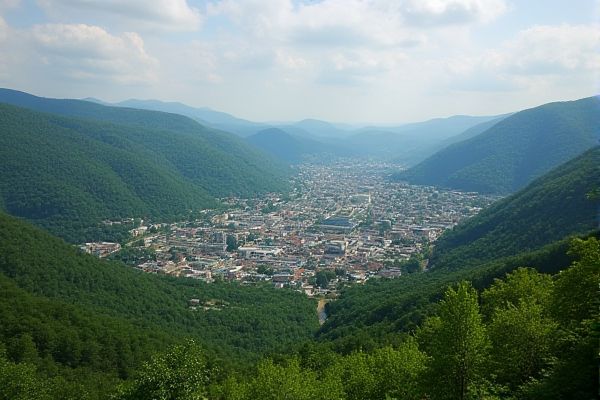
What to know as new resident in West Virginia: State taxes and regulations. Unique regional dialects. Appalachian culture and history. Cost of living variations. Job markets and industries. Outdoor recreation hotspots. Weather patterns and seasons. Availability of healthcare facilities. Education system quality. Transportation infrastructure.
State taxes and regulations.
As a new resident in West Virginia, it is essential to understand that you will be taxed on your federal adjusted gross income, and you must file a personal income tax return using the IT-140 form. Additionally, you are required to report your real and personal property annually by October 1, and you may be eligible for exemptions such as the Homestead Exemption if you meet specific criteria.
Unique regional dialects.
In West Virginia, the unique regional dialects are predominantly influenced by Appalachian English, particularly strong in the southern and rural interior counties, while northern areas exhibit speech patterns similar to those in Northern states, with additional influences from early settlers such as the Scotch-Irish and later immigrants from Europe. For more detailed insights into the linguistic diversity of this region, visit the West Virginia Encyclopedia, which provides comprehensive information on the state's cultural and historical background.
Appalachian culture and history.
Appalachian Culture is a way of life and thinking that developed in the 1700s, influenced by the Scotch Irish, British Isles, and German settlers who interacted with Native Americans. These settlers adopted practices such as crop cultivation and began forming a distinct identity known as "Greater Appalachia". This cultural amalgamation has contributed to a unique and enduring regional character that continues to influence the way of life in the area today.
Cost of living variations.
The cost of living in West Virginia is significantly more affordable compared to the national average, being 9% lower overall. Housing expenses are particularly reduced, coming in at 20% less than the average across the country, which offers great savings for residents. Additionally, utilities are more economical, costing 6% less, while food expenses are 5% below the national level. Healthcare is also more budget-friendly with an 8% decrease in costs. However, it's important to note that transportation costs stand out as an exception, being 6% higher. For full insights into living expenses, you can explore the Cost of Living Calculator provided by RentCafe, which offers comprehensive details on financial expectations in West Virginia.
Job markets and industries.
As a new resident in West Virginia, you should know that the job market is expected to reach pre-pandemic levels, with average annual job growth of nearly 0.9 percent through 2026. Key industries for job growth include Aerospace, Automotive Equipment, and Food/Beverage, while the state faces challenges such as low labor force participation and population decline. For a deeper understanding of the state's economic trajectory, you can explore the West Virginia Economic Outlook which details comprehensive insights and predictions for the upcoming years.
Outdoor recreation hotspots.
West Virginia offers a plethora of outdoor recreation hotspots, including the Hatfield-McCoy Trail System for dirt biking and ATV excursions, New River Gorge National Park for whitewater rafting and rock climbing, and various state parks and forests for hiking, fishing, and horseback riding, all of which contribute significantly to the local economy and provide diverse adventure opportunities. For more detailed information and guide, visit the West Virginia Outdoor Recreation page.
Weather patterns and seasons.
West Virginia experiences a humid continental climate characterized by four distinct seasons, including cold winters with average temperatures around 33°F in January and warm, humid summers with averages reaching 73°F in July. The state benefits from a 160-day growing season and receives significant precipitation that varies from 35 to over 60 inches annually depending on the region. This diverse climate is shaped by factors such as its latitude, elevation, and the influence of westerly winds, with most storm tracks originating from the northwest, west, or southwest. For more detailed information about West Virginia's weather patterns, you can visit the Britannica website.
Availability of healthcare facilities.
In West Virginia, significant investments are being made in healthcare infrastructure, with WVU Medicine's nearly $400 million investment in new operating rooms, pharmacies, and other facilities across various locations, enhancing the availability and quality of healthcare services. The state's Certificate of Need program regulates healthcare expansions and capital expenditures to ensure that health services are provided in an orderly and economical manner, preventing unnecessary duplication and promoting accessibility and quality of care, particularly in rural areas.
Education system quality.
West Virginia's education system faces significant challenges, as it ranks near the bottom nationally in several key areas. Despite boasting the lowest dropout rate in the country and being ranked 22nd in school safety, the state is placed 48th in overall school quality. Furthermore, West Virginia ranks 49th in math test scores and 50th in reading test scores, indicating a critical need for reform. It's evident that strategic changes are necessary to improve educational outcomes. For more insights on this topic, consider reading the editorial on The Intelligencer, which discusses the urgent need to rethink education in the state.
Transportation infrastructure.
As a new resident in West Virginia, you should know that the Bipartisan Infrastructure Law will significantly improve the state's transportation infrastructure by repairing and rebuilding roads and bridges, enhancing highway safety, and expanding public transportation options. This includes a substantial investment in federal highway formula funding and a dedicated amount for public transportation over five years, marking a significant step towards modernizing and upgrading the region's connectivity and accessibility.
